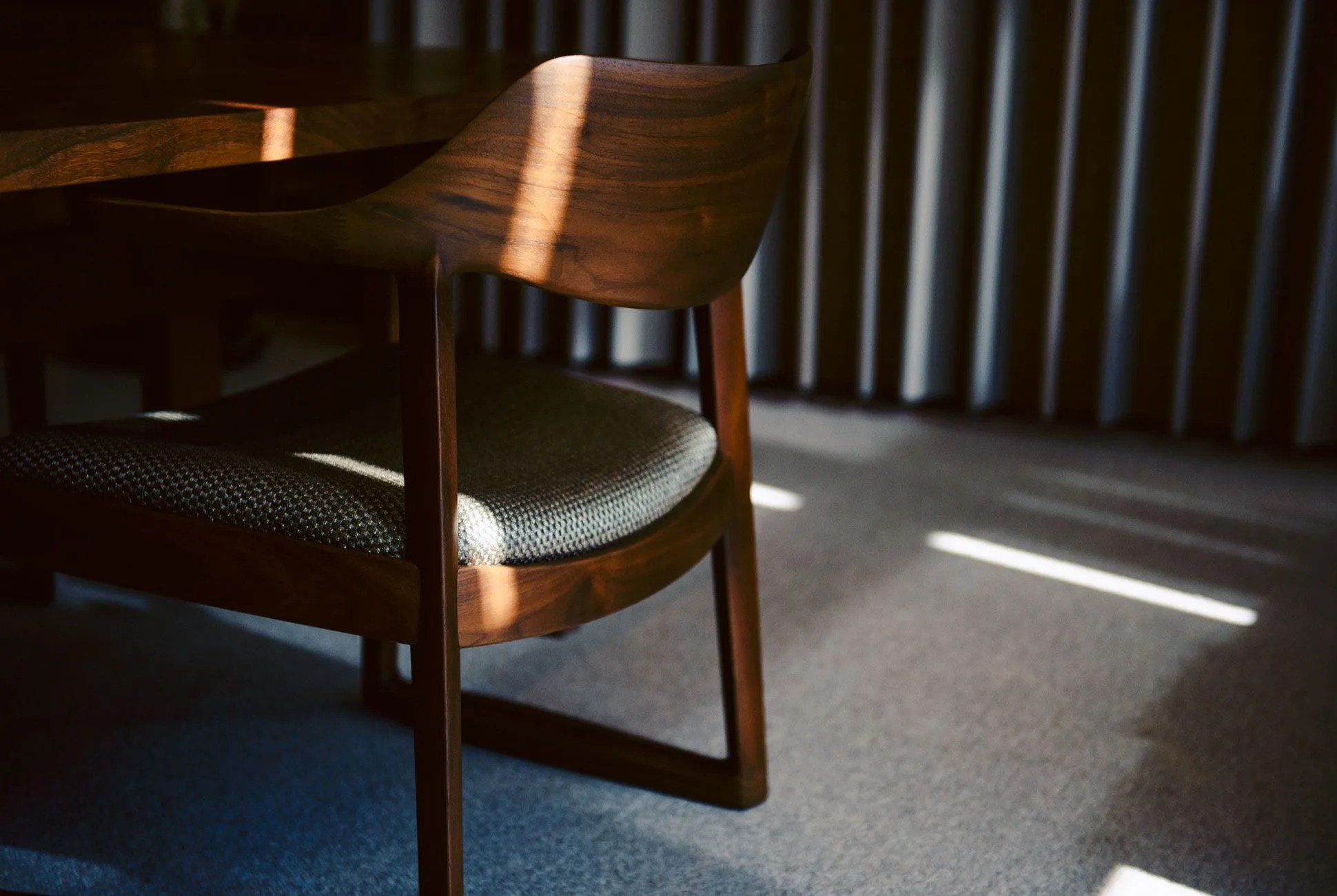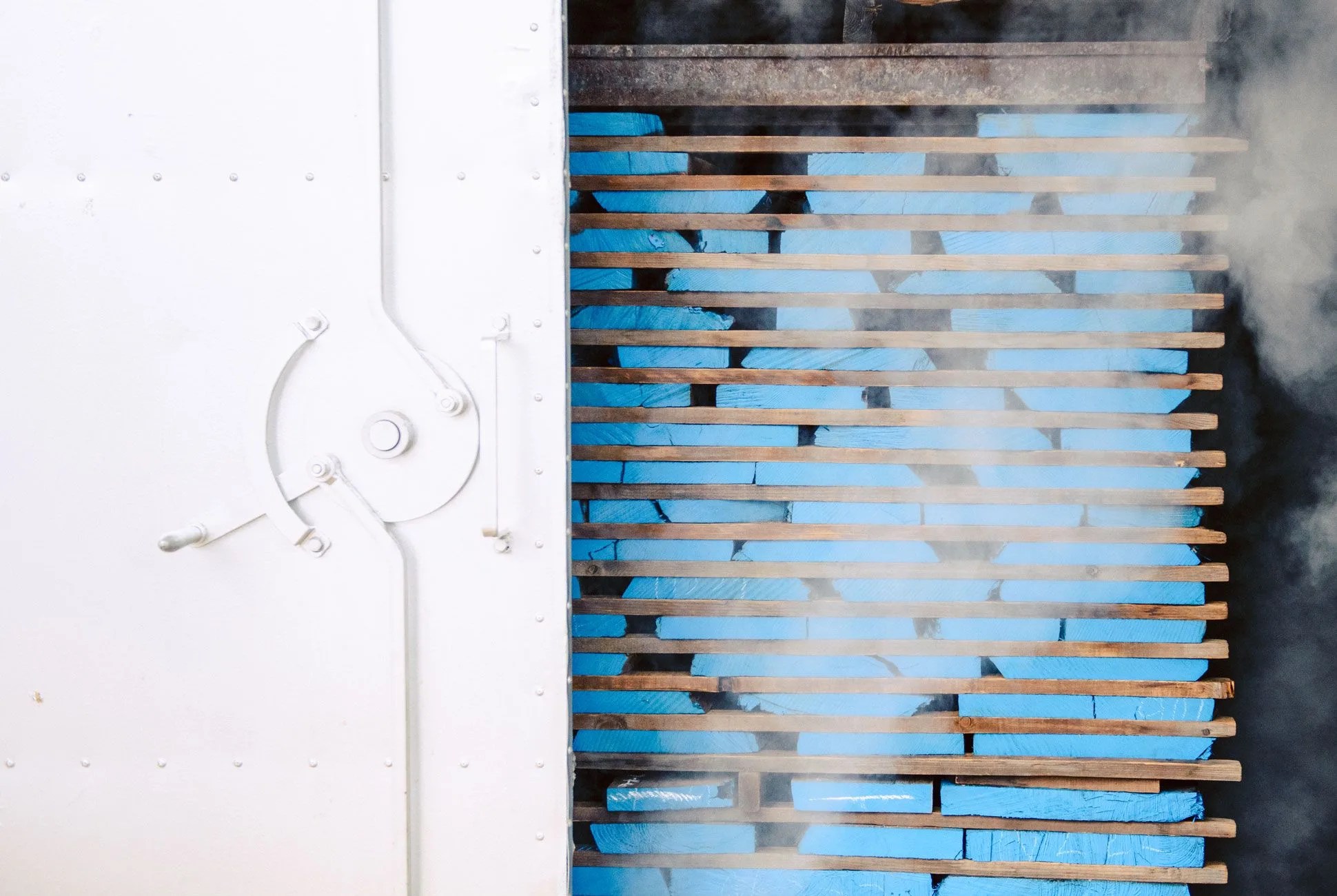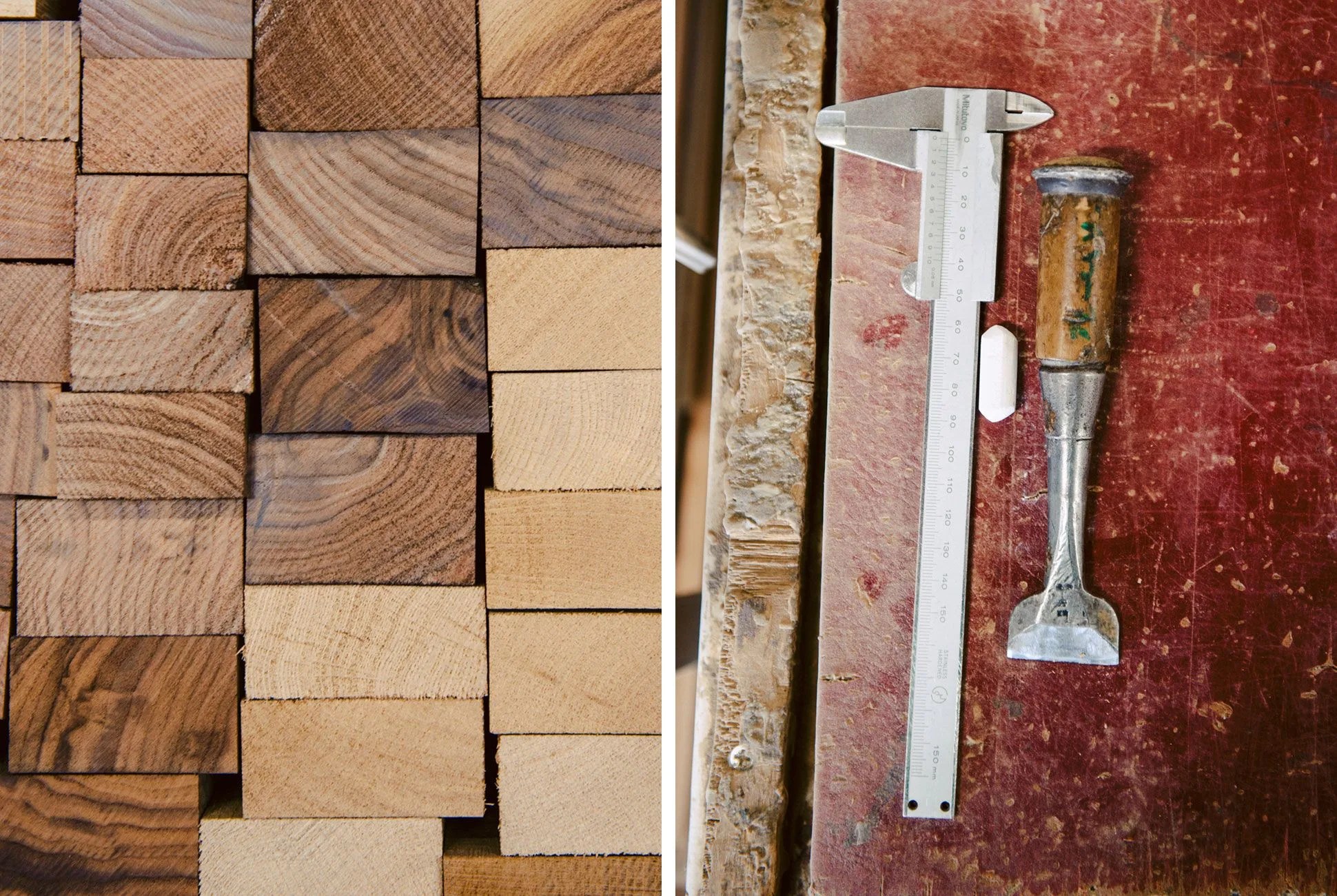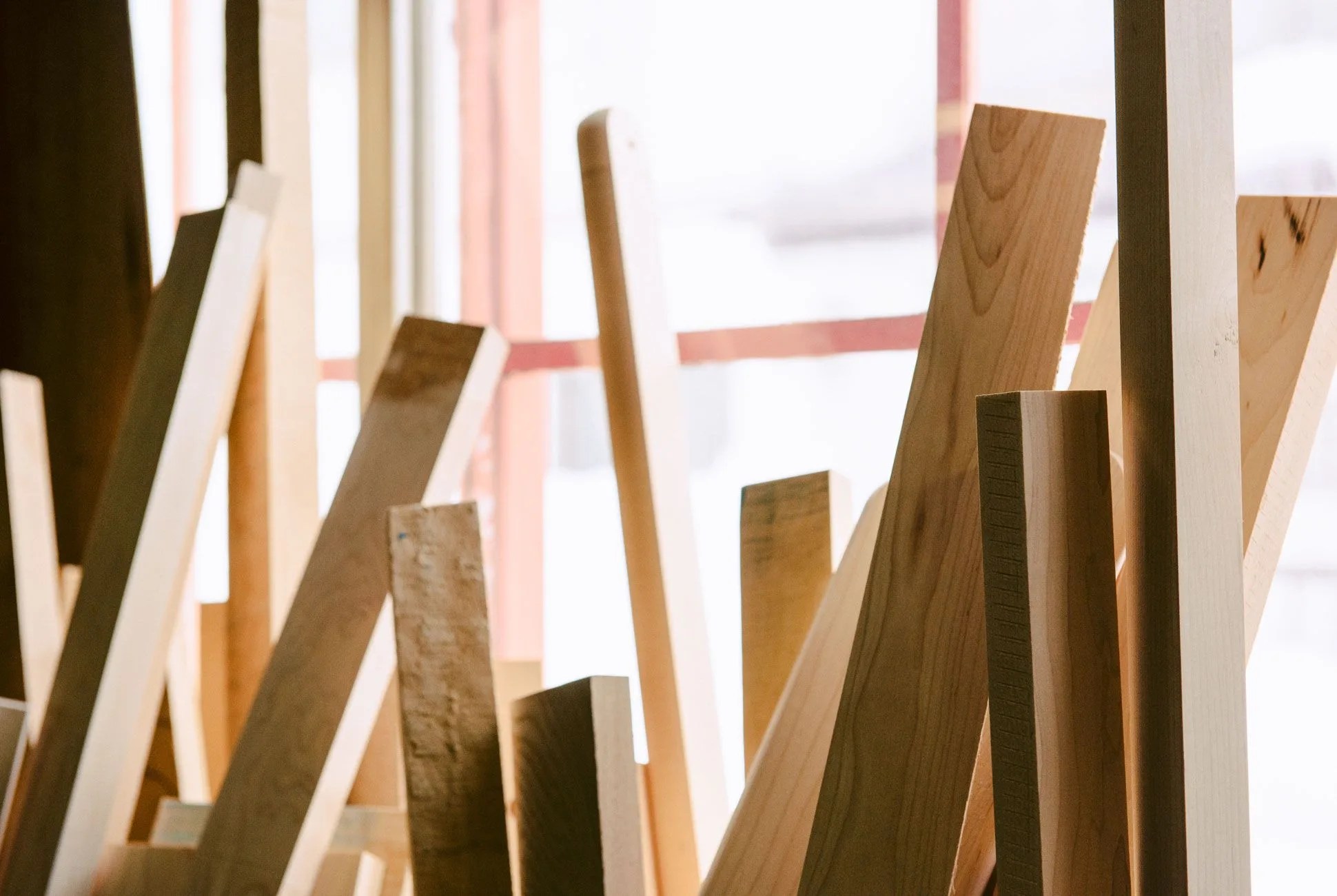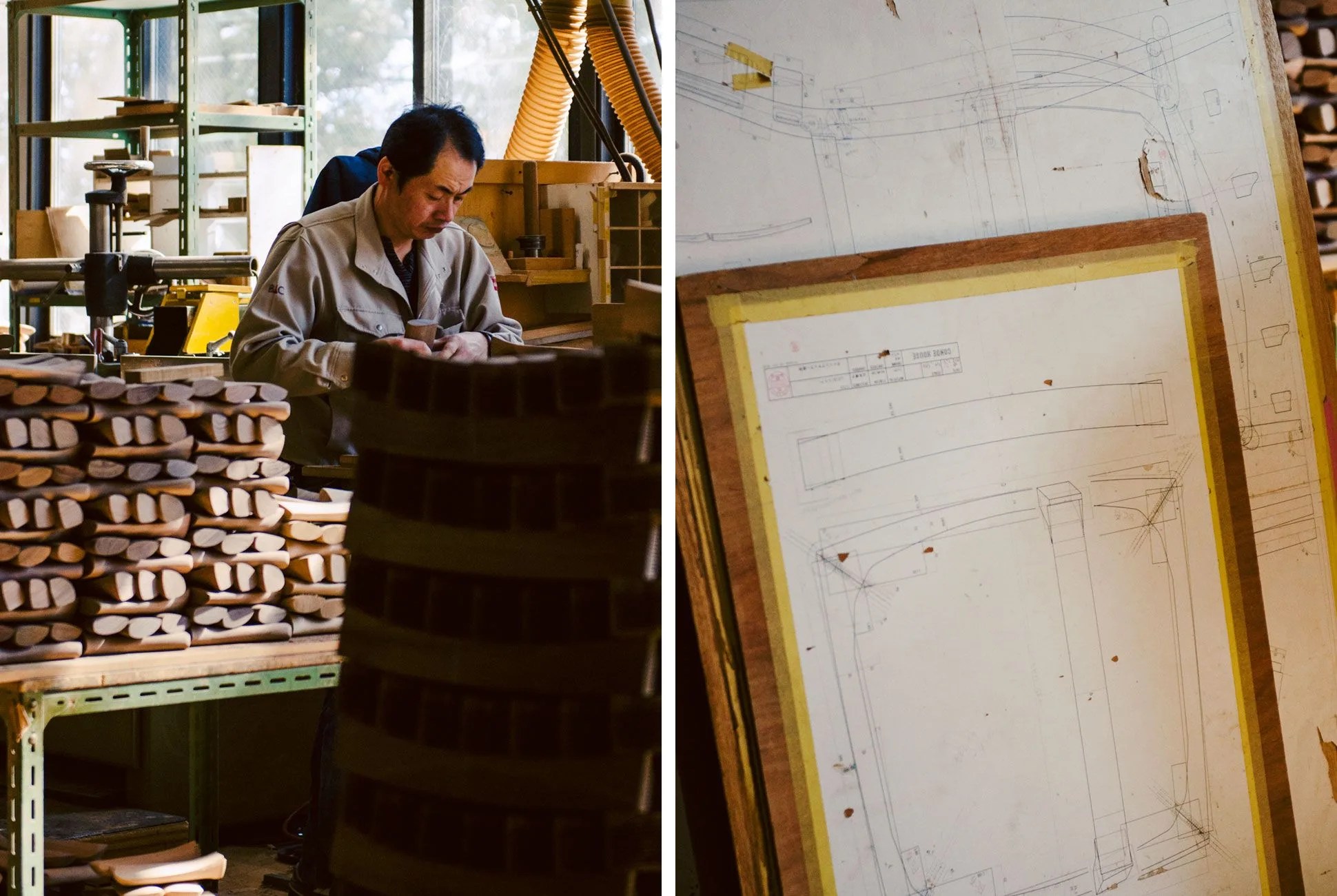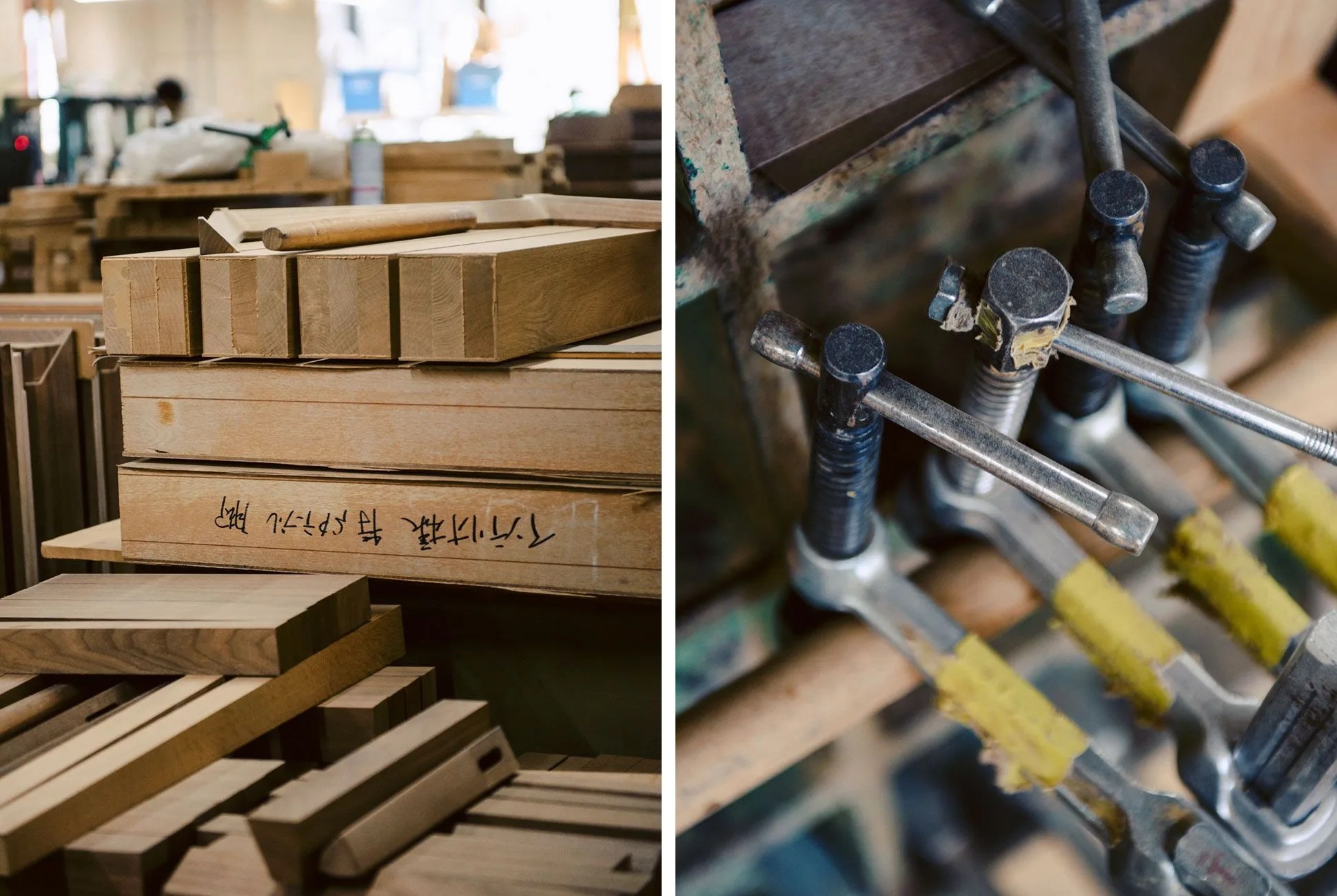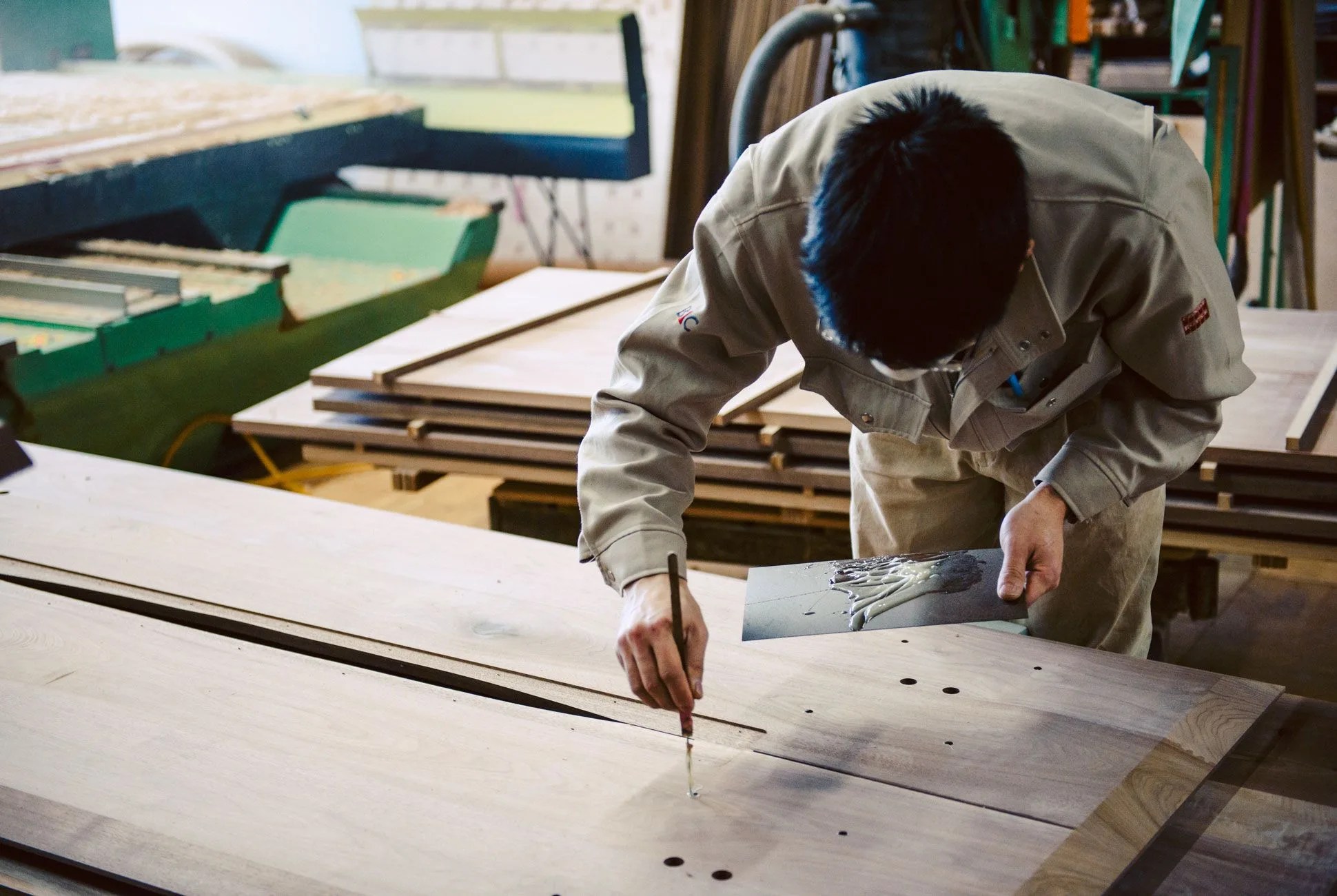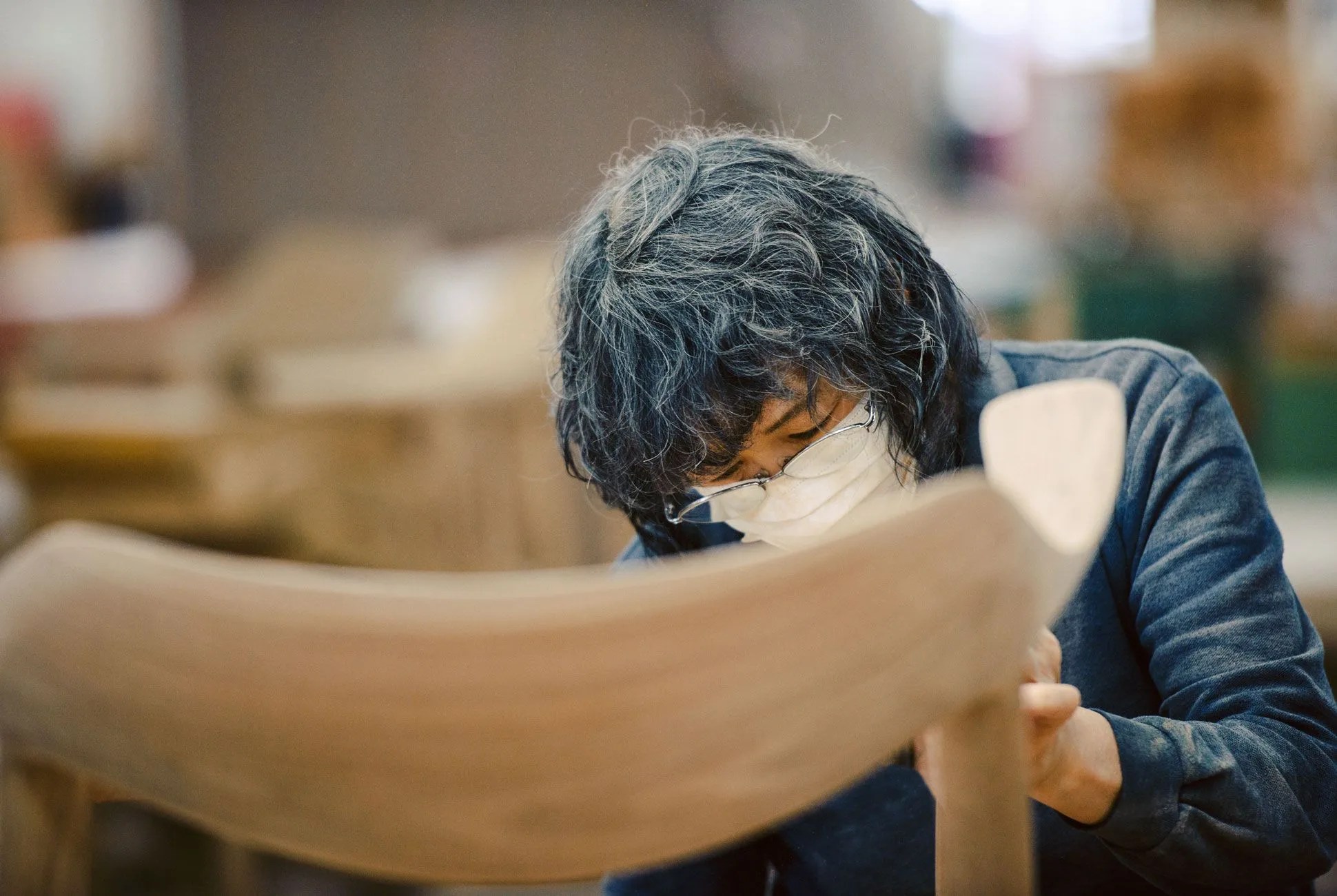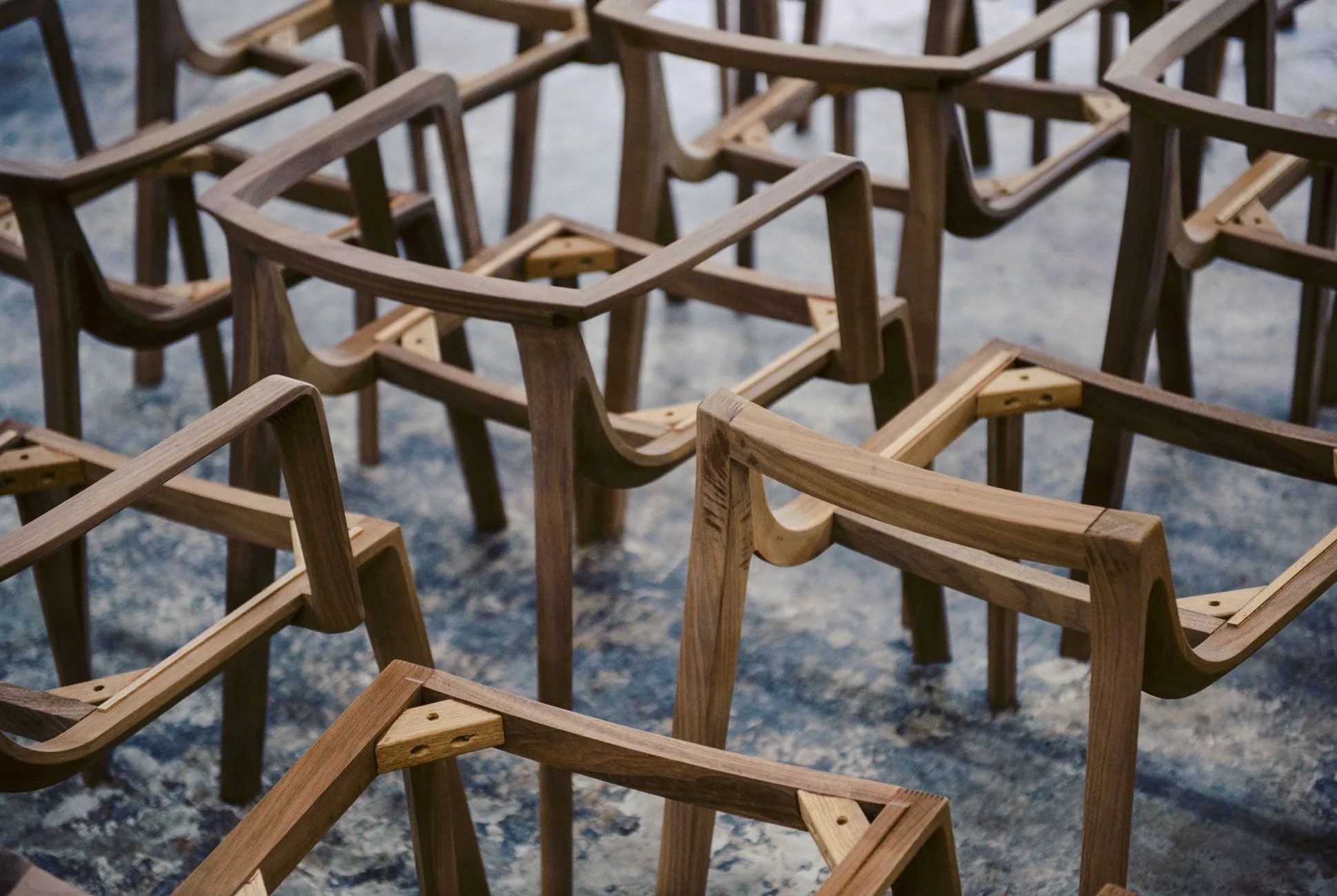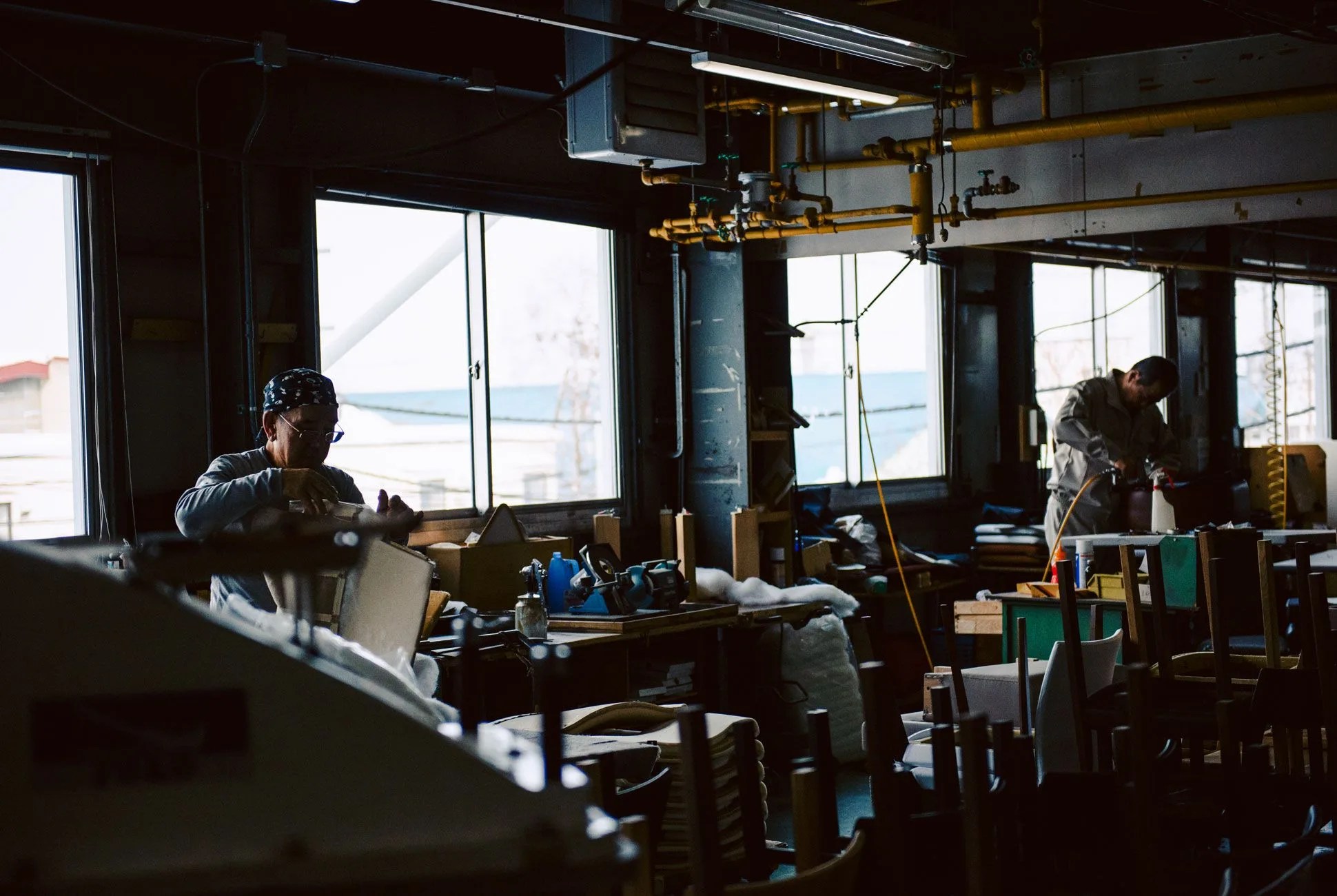“Because I’m damned,” laughed Yuki Watanabe, president of Conde House, when asked why his furniture company, which is the biggest and most revered on Japan’s northern island, hasn’t yet caught on in America. Thirty-two years ago, Watanabe, now a large and commanding presence both physically and within the company, was the young salesman who first brought Conde House to America in 1984 by opening a showroom in San Francisco. But the pieces of high-end furniture, which take about three weeks to make by hand and cost a premium to ship across the Pacific, came at just the wrong time. The economic recession brought on by the 1979 energy crisis was stifling spending on luxury goods, and just one year after Conde House opened their showroom, Ikea opened its first store in America. Nordic design style, which shares a similar, clean aesthetic with Japanese design, was now available in a cheap DIY kit. Conde House had no market.
As America’s economy rebounded, its taste for modern interior design grew. The Eames Lounge Chair, for example, which was entered into the Museum of Modern Art’s permanent collection in 1960, became a ubiquitous symbol of sophistication and resonated with a whole new audience by the mid-‘90s. However, since 1984, the Japanese yen has doubled in value against the American dollar. Good for Japan, bad for Watanabe’s exports. So without much choice, Watanabe now finds himself selling furniture to the rest of the world at an inflated price.
Connected to Conde House’s showroom is its factory, contained within a large, single room. A few feet into the room, Watanabe stopped and watched, as if for the first time, a computer-aided rounder racing along a piece of wood. It shaped the wood smaller with every lap, forming the rough shapes of arms and legs that would be finished by hand only a few feet away. Sawdust catching on his dark suit, he spoke of expansion.
In just the last decade, Conde House has partnered with six overseas agents to stock their furniture; four of these partnerships came in 2015. And earlier this year, Mr. Watanabe celebrated the opening of a showroom at the San Francisco Design Center. He wants to see the style of Asahikawa, a small, remote district in rural Japan, in every major city of the world.
For the past 14 years, Conde House has planted a tree for every one they have taken from the forest. A total of 40,000 trees have been planted.
Outside of the sporadic gray tufts of steel skylines — Sapporo, Niseko, Otaru — Hokkaido is primarily rural farmland and forest. Asahikawa is its hardwood heart. A huge concentration of Japanese ash and oak feed the region’s furniture makers and paper mills, forming the foundation of a boomtown that never busted. During World War II, a nearby army base required wood and wooden products for the war effort, supporting a cross section of streets packed with furniture houses, all a stone’s throw from one another. There are now 35 furniture makers in the area, ranging from one-man operations all the way up to Conde House, which employs 300 factory workers. Keeping all of this going is a commitment to sustainability that permeates every choice made during the design process.
14 photos
While some furniture houses chop up visual space into many distinct segments, or favor ornate designs that create edges, insets or texture, Conde House’s designs are far simpler. As a rule, they aim to create as few lines as possible: legs that curve rather than cut, moldings that are so simple they are immediately understandable (but far harder to actually design). It’s the kind of design that is striking as much for what it leaves out, as for what it creates.
As Watanabe walked the production floor, the furniture progressed from untouched, raw wood to chair skeletons to fully upholstered couches. The work is slow going, because Conde House focuses on making furniture that will last “three lifetimes”: one for material, one for structure and one for design.
To show off the beauty and warmth of the wood, Conde House strives for simplicity.
The furniture is made from wood selected and carefully dried — by air for one to two years and by kiln for two to three weeks — so that it doesn’t warp over time. The structures are simple and crafted to reduce fail points. While some furniture houses use steam to bend the wood, Conde House presses multiple thin strips of wood together using glue and a massive press to create durable bends, like on the back of a chair. This is similar to plywood in theory, except that on close inspection, the chair backs produced by the master craftsmen appear to be one solid piece of wood. The thin strips also allow the furniture house to make the most of any given tree.
To show off the beauty and warmth of the wood, Conde House strives for simplicity. To remain relevant, the pieces must feel modern, even after they are handed down over generations. Their latest design, the Kamuy Series, was created by Naoto Fukasawa. “No individuality is the mark of Kamuy,” said Fukasawa. “It is a design that is at home anywhere in the world.” But most importantly, the designs need to be comfortable. Fukasawa’s chair is called “the chair of all chairs” and is designed to be perfectly proportioned and as comfortable as possible, but not with cushions and upholstery — with wood.
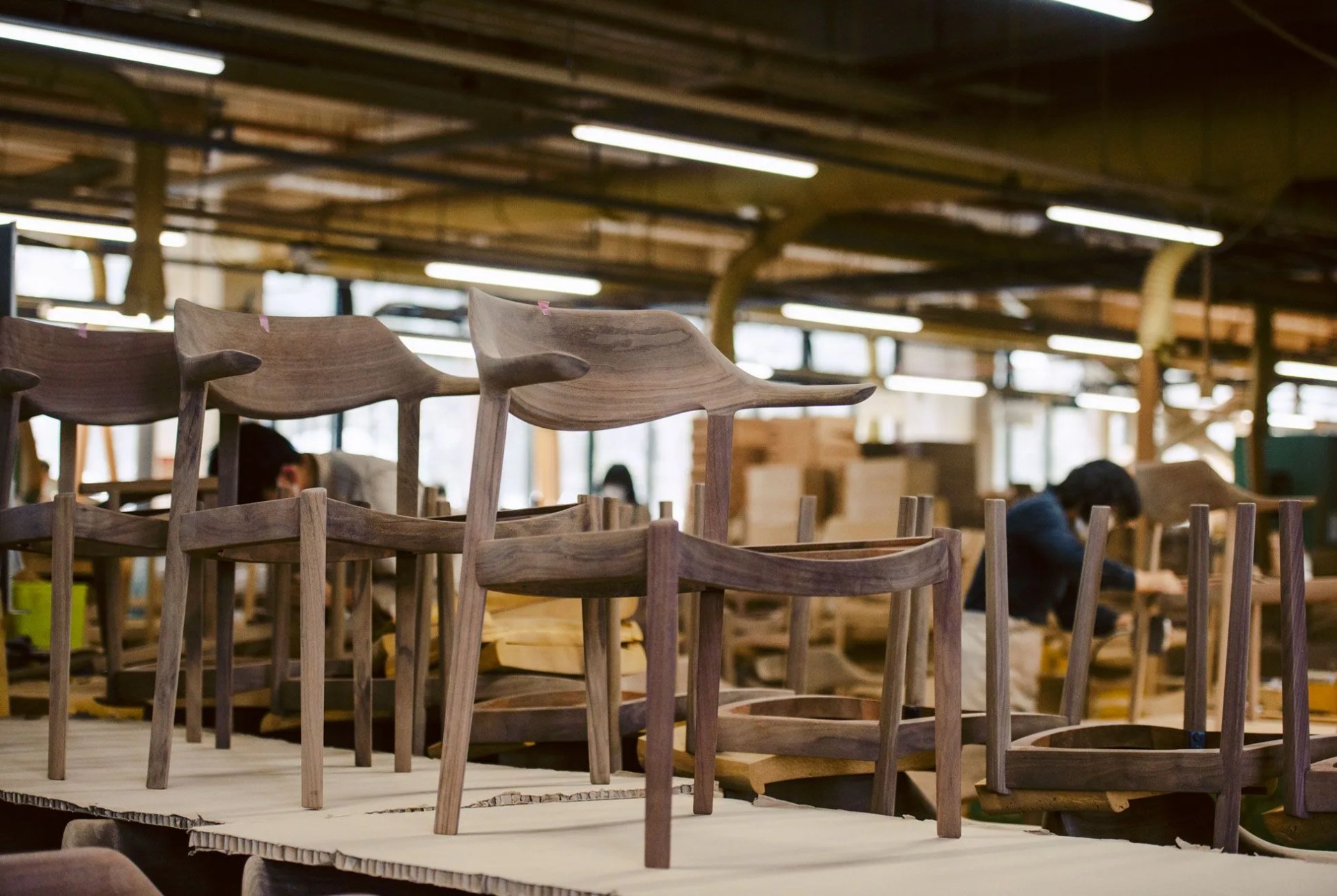
Like Fukasawa’s, the house’s other designs come from a huge collection of freelance designers rather than a handful of in-house designers, as is more typical of most houses. Because Conde House’s designers are relatively lesser-known, they come at a more affordable price, especially when you consider what Herman Miller, Vitra, Fritz Hansen or PP Møbler pay to craft designs from big names like Eames or Wegner. Watanabe frequently turns down designers who are too costly, helping him provide the best quality at the lowest price possible.
In the showroom Watanabe pointed out the Canyon Dining Table, which he designed. This isn’t happenstance. One out of every three workers on the salesforce has a design degree. One out of every eight workers making the furniture has a design background. Asakihawa is a design-minded city, and Conde House, which recently sold furniture to Apple and Stanford University, is its best chance to share the city’s craft with the world.

